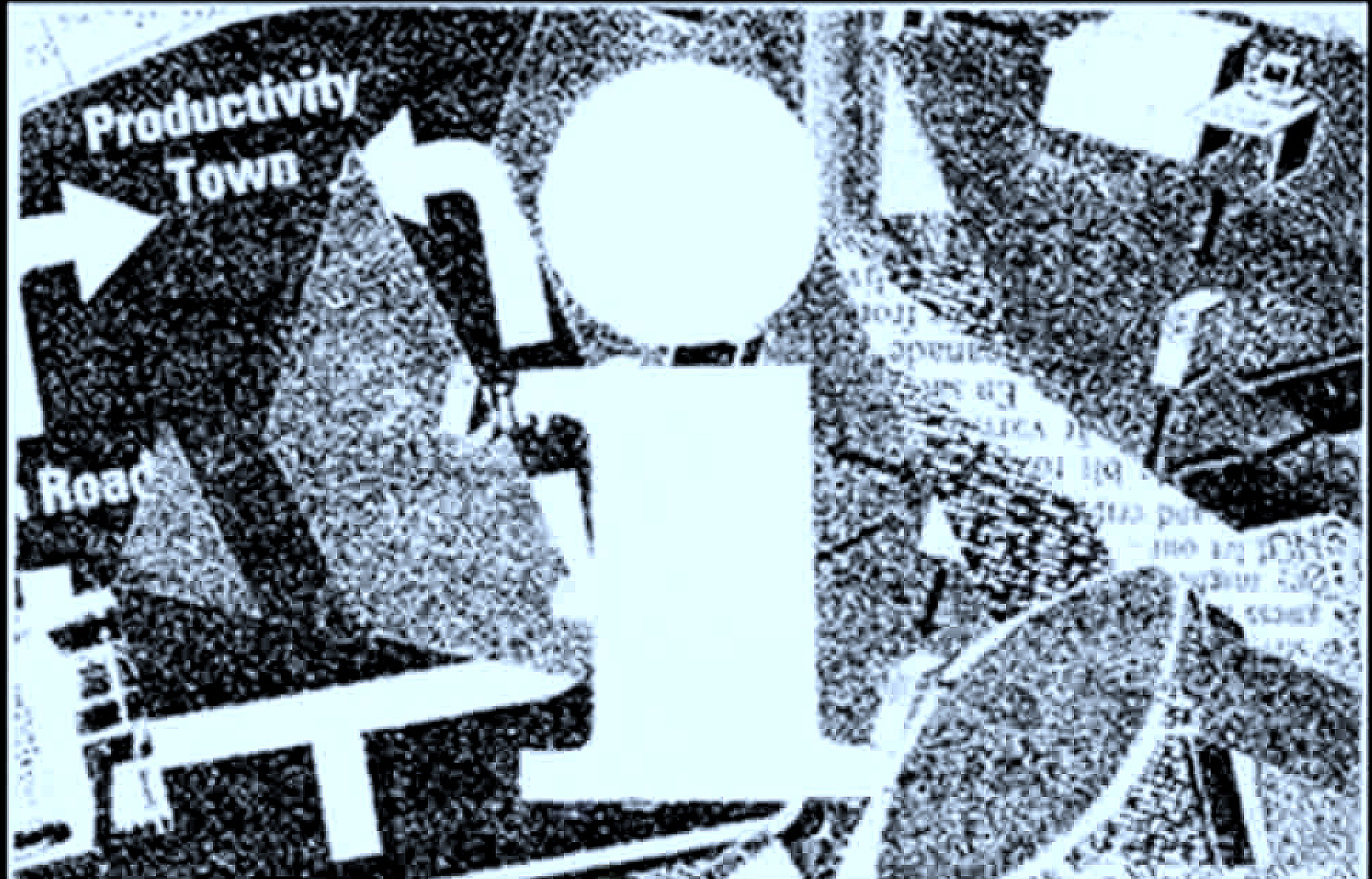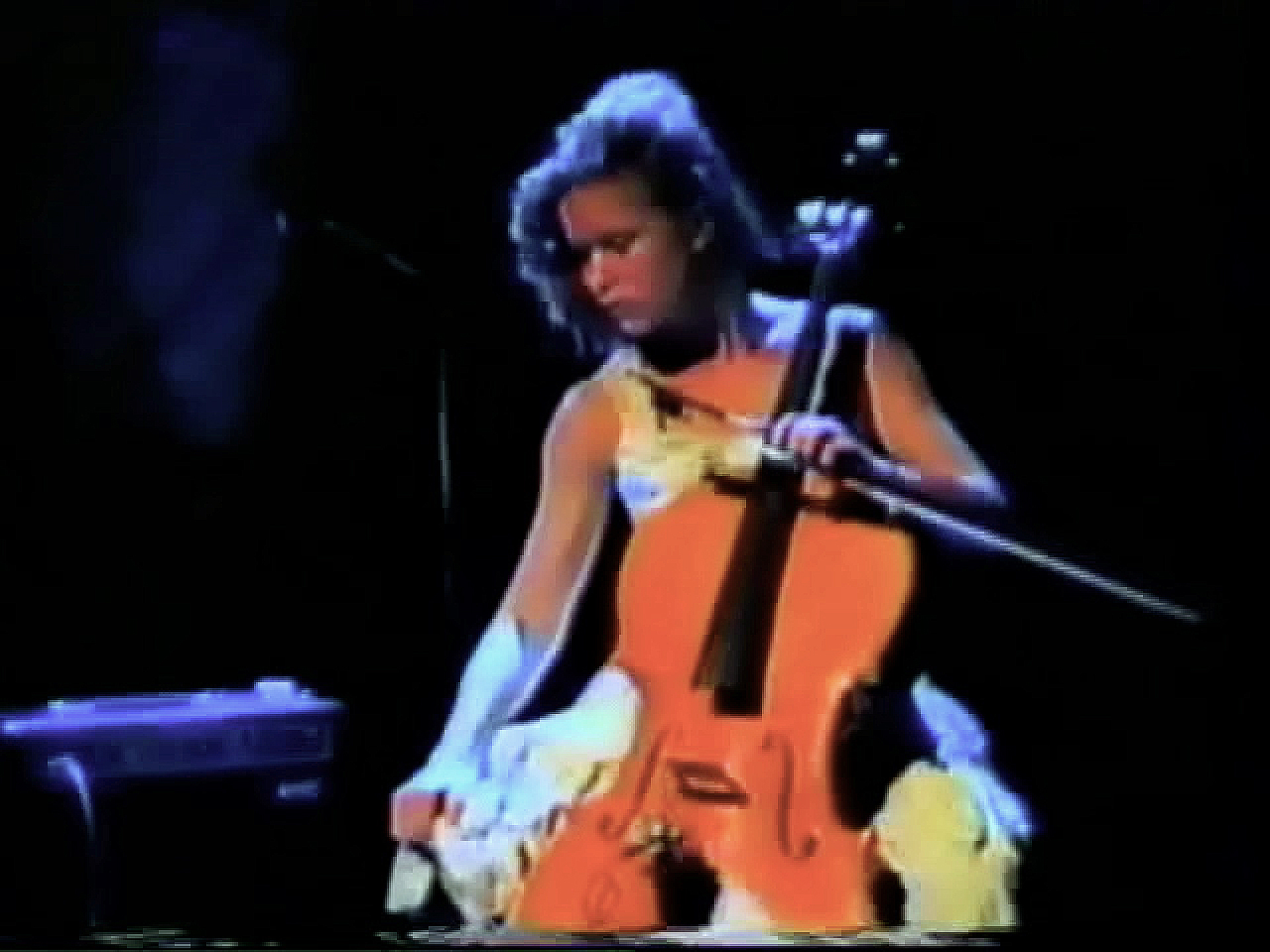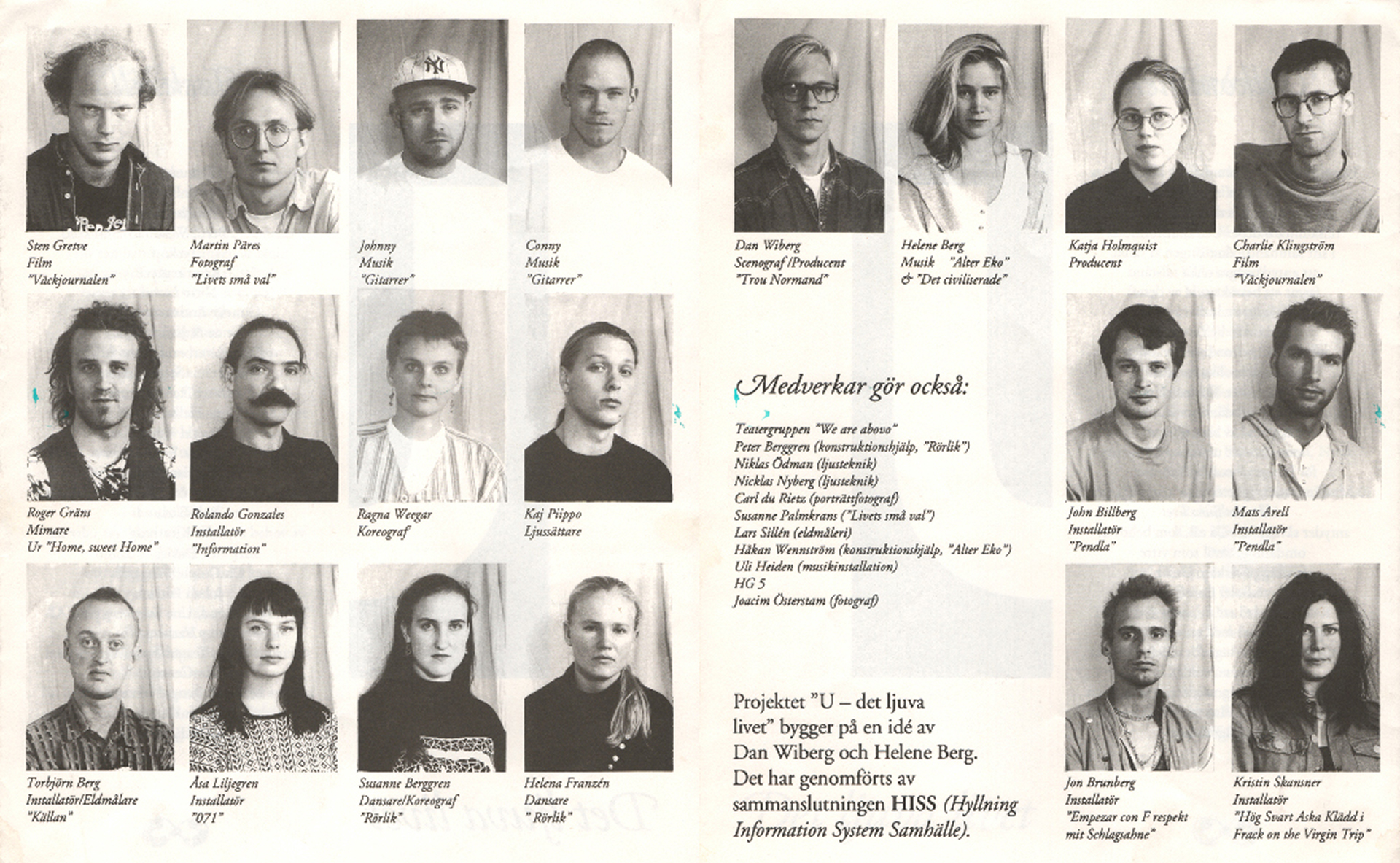Plot:
Under Slussen in Stockholm, an 800-meter-long evacuation tunnel became the arena for the two co-laborative exhibitions "i-information" (1991) and "U-det ljuva livet" (1992).
Idea:
To create music and sound compositions for the two exhibitions.
i-information
Visitors were first guided through the darkened tunnel. The various installations were then lit up one by one as visitors moved through the exhibition. The music was performed at a spiral staircase at the conclusion of the exhibition after the audience had been guided through all of the other installations. It was a piece for cello and delay pedal, trombone, percussions and a three-part choir based on a recorded improvisation. I had enlisted colleagues and vocally skilled acquaintances to form the mixed-voice choir.
Production year: 1991


Artistic team:
Composer & cellist: Helene Berg
Choir: Mattias Hülphers, Åsa Johannisson, Karin Schelin, Hanna Melanton, Mattias Knave, Lars Björk, Stefan Petersson, David Melin, Johan Lennström.
Artists: Kristin Skansner, Dan Wiberg, Raul Galli, Peder Finnsjö, Charlie Klingström, Katja Holmquist, Helena Burman, Iggo Frost, Patrik Anderberg, Thomas Henriksson.

U-Det ljuva livet
The exhibition "U-Det ljuva livet" is based on an idea by Dan Wiberg and Helene Berg. The exhibition was structured so that each installation constituted its own enclosed space, allowing visitors to move freely between them. I created the soundtrack of the exhibition, which was realized through a pneumatic organ and a three channel audio installation based on samples of recorded sounds.
The pneumatic organ was constructed using organ pipes, a water hose, and electric valves. The piece was greatly inspired by a train journey through the harbor of Hamburg on New Year's Eve and the stereo-cacophonous sounds of boat sirens coming through the open train window.
I was aware of that the organ at the Theater School in Stockholm would be dismantled during a renovation, and I took the opportunity to salvage some of its pipes. I arranged the pipes in different locations in the tunnel and connected them with 150 meters of water hose and 400 meters of single-strand cable. A compressor and a hydrofor was used to circulate the air and to play the instrument I used a keybord built of switches and electric valves that could open and close the air stream.
The initial idea was for the pipes to produce different chords, but the result sounded more like a roaring cacophony, rather reminiscent of the experience I had on New Year's Eve in Hamburg.The sample piece was brought together with an Akai S1000 and Cubase on an Atari. The composition consisted of rythmzized sounds of things like refigurators, elektricity, switches, cracking windows etc. and was played through three channels. Together with the organ pipes it created the soundscape of the exhibition.
Production year: 1992

Artistic team:
Artists: Dan Wiberg, Tobjörn Berg, Lars Sillén, John Billberg, Mats Arell, Jon Brunberg, Kristin Skansner, Sten Grettve, Martin Päres, Kai Pippo, Ragna Weegar, Rolando Gonzales, Roger Gräns, Åsa Liljegren, Susanne Berggren, Helena Franzén, Katja Holmquist, Charlie Klingström.
Music: Helene Berg, Johnny Essing, Conny Nimmersjö.
